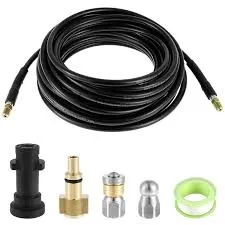Current Pricing Trends for AC Copper Pipes and Market Analysis
The Pricing Landscape of AC Copper Pipes
In recent years, the demand for advanced air conditioning systems has surged significantly, leading to an increased need for essential components such as AC copper pipes. These pipes play a vital role in the efficient functioning of air conditioning systems, allowing for the smooth circulation of refrigerants. Understanding the pricing of AC copper pipes is crucial for manufacturers, contractors, and consumers alike, as various factors can influence costs and availability in the market.
Composition and Benefits of Copper Pipes
Copper has long been favored in HVAC applications due to its excellent thermal conductivity, durability, and resistance to corrosion. AC copper pipes are primarily used in the installation and repair of air conditioning systems, where they transport refrigerants to efficiently absorb and dissipate heat. Their ability to withstand high pressures and maintain structural integrity over time makes them an ideal choice for air conditioning units, particularly in residential and commercial applications.
Current Pricing Trends
As of 2023, the price of AC copper pipes has been subject to fluctuations due to a myriad of factors including global demand, raw material costs, and economic conditions. On average, the price of copper has seen significant rises over the past few years, prompting manufacturers to adjust their pricing strategies accordingly. The market dynamics experienced during and following the COVID-19 pandemic further aggravated these trends, leading to supply chain disruptions and increased production costs.
According to recent market analysis, the price per foot of AC copper pipes can vary widely, ranging from approximately $2 to $5, depending on the quality, gauge, and market conditions. For instance, thicker pipes may command higher prices due to their capability to handle greater pressure. Moreover, regional disparities in logistics and supply availability can contribute to price variations, making it essential for buyers to conduct thorough research before making purchasing decisions.
Factors Influencing Copper Pipe Prices
Several elements contribute to the pricing of AC copper pipes
1. Raw Material Costs The price of copper is affected by global market trends, including mining output, geopolitical events, and demand from other industries such as electronics and construction. When copper prices rise, manufacturers often pass these costs onto consumers.
ac copper pipe price

2. Manufacturing Costs Changes in production processes, labor costs, and energy prices can influence the overall cost of manufacturing copper pipes. Increases in these areas can lead to higher final pricing.
3. Supply Chain Dynamics Global supply chains were significantly impacted during the COVID-19 pandemic. Shortages in raw materials, transportation delays, and logistic challenges have all contributed to inconsistent pricing and availability of copper pipes.
4. Market Demand Seasonal fluctuations, increased construction activities, and a rise in home renovations can spike demand for AC units, subsequently increasing the demand for copper pipes. High demand typically leads to increased prices.
5. Economic Conditions Economic growth or recession can significantly impact consumer spending and construction activities. A booming economy may drive higher demand and prices, while a downturn could have the opposite effect.
Looking Ahead
As we progress into the latter part of 2023 and beyond, the AC copper pipe market is expected to remain volatile due to ongoing geopolitical tensions and economic uncertainty. Trends towards more energy-efficient and eco-friendly HVAC systems may also shift demand patterns for AC copper pipes, possibly influencing pricing structures.
For consumers and businesses alike, staying informed about these trends is crucial. Engaging with reputable suppliers and keeping an eye on market developments can aid in making cost-effective decisions. Additionally, considering alternative materials or technologies may also be beneficial in an environment where copper prices are unpredictable.
Conclusion
In summary, the pricing landscape of AC copper pipes is influenced by a complex interplay of factors, including raw material costs, manufacturing expenses, supply chain dynamics, and market demand. As the HVAC industry continues to evolve, it is essential for stakeholders to remain aware of these influences to navigate the market effectively. By doing so, they will ensure they are making informed decisions that align with their project needs and budgetary constraints.
-
Ultimate Spiral Protection for Hoses & CablesNewsJun.26,2025
-
The Ultimate Quick-Connect Solutions for Every NeedNewsJun.26,2025
-
SAE J1401 Brake Hose: Reliable Choice for Safe BrakingNewsJun.26,2025
-
Reliable J2064 A/C Hoses for Real-World Cooling NeedsNewsJun.26,2025
-
Heavy-Duty Sewer Jetting Hoses Built to LastNewsJun.26,2025
-
Fix Power Steering Tube Leaks Fast – Durable & Affordable SolutionNewsJun.26,2025

